(Beyond Pesticides, August  1, 2016) As expected, President Obama signed into law an amendment to S. 764, the National Bioengineered Food Disclosure Law, which establishes a national GMO (genetically modified  organisms or genetically engineered-GE) food labeling requirement that food safety advocates say may be deceptive, preempts states from adopting stronger label language and standards, and excludes a large portion of the population without special cell phone technology. Pushed by Senators Debbie Stabenow (D-MI) and Pat Roberts (R-KS), the law is being characterized by its supporters as a compromise, stronger than the original legislation, the Biotechnology Food Labeling and Uniformity Act (S.2621), which was dubbed the Deny Americans the Right to Know (DARK) Act. That bill failed to reach cloture in the Senate in March. The U.S. Department of Agriculture, a big supporter of genetically engineered food production, will have two years to develop the standard, during which time it will assess the question of equitable access to the disclosure of ingredients. This new law will invalidate a stronger GMO labeling law that took effect in Vermont on July 1.
 The law, signed by the President on July 29, does very little to ensure that consumers will actually be able to identify  genetically engineered ingredients  because it  allows for a range of labeling options that will  not warn consumers — quick response (QR) codes, 800 numbers, websites and on-package labeling. This approach leaves poorer Americans at a disadvantage in accessing  this information, as QR code labels require the use of a smartphone to read. Allowing food companies to decide how to label enables  them to misinform or mislead the public about their products. We have already seen on product labels  big food links to websites that extol the safety of GE foods. More on company labeling can be found here.
The law, signed by the President on July 29, does very little to ensure that consumers will actually be able to identify  genetically engineered ingredients  because it  allows for a range of labeling options that will  not warn consumers — quick response (QR) codes, 800 numbers, websites and on-package labeling. This approach leaves poorer Americans at a disadvantage in accessing  this information, as QR code labels require the use of a smartphone to read. Allowing food companies to decide how to label enables  them to misinform or mislead the public about their products. We have already seen on product labels  big food links to websites that extol the safety of GE foods. More on company labeling can be found here.
The law has split consumer groups from major organic manufacturers who, through their trade association, the Organic Trade Association (OTA), supported passage of the Stabenow-Roberts language. According to Natural News, “Groups and companies that lobbied on behalf of the bill and convinced Senators that the organics industry would accept it, include the OTA, Whole Foods Market and UNFI (the country’s largest organic and natural foods wholesalers). The OTA effort was led by Board Chair Melissa Hughes of Organic Valley. Other OTA brands leading the effort include Smuckers and White Wave.” Successful Farming described the supporters this way: “[F]ood and agriculture interests nationwide were united in their support for the bill, which had the support of the Organic Trade Association as well as the conventional industry that relies on biotechnology.” In characterizing the bill’s passage, it reported, “President Barack Obama today quietly s igned into law legislation that prevents states from requiring on-package labeling of genetically modified ingredients, capping a historic win for farm groups, food companies, and the biotech industry.”
Earlier in the month, the  Just label It campaign opposed the legislation when under consideration in the U.S. House of Representatives because the bill does not require “simple at-a-glance GMO disclosure on the [food] package,” but was silent on the preemption provision overriding state authority to adopt more stringent labeling. Gary Hirshberg is quoted in The New York Times on July 14 as saying, “What today really means is that we’ve left the legislative period of this battle after seven years and moved into the regulatory and marketplace phase of it, which was where it was always headed anyway.“ According to the Organic Consumers Association, “The proposed bill also gives food corporations another two years before they are even required to pretend to provide consumers with any information at all about the GMO ingredients in their products. Stabenow and Roberts are determined to preempt Vermont’s law, even though major food corporations such as General Mills, Campbell’s, Pepsi, Frito-Lay, Mars, Kellogg’s, ConAgra are already labeling, to comply with Vermont’s July 1 deadline for labeling.”
The Organic Seed Growers and Trade Association (OSGATA) withdrew its membership from the Organic Trade Association because of what it said were misleading assertions made to its membership and the public about what the bill would accomplish. See OSGATA statement, Organic Farmer Group Dumps Organic Trade Association.
The White House We the People has pointed to the USDA organic food label as notice to consumers of food commodities that are grown without GMO ingredients. Consumer and farmer advocates have asked USDA for years to protect organic production from GMO drift, while the agency advances a “coexistence” policy that ignores genetic contamination of organic and non-GMO food and economic loss for organic growers. Beyond Pesticides has advanced a polluter pay policy that holds the patent holder responsible for genetic drift.
Public interest groups published an ad in the Philadelphia Inquirer during the Democratic Convention, urging President Obama to veto the bill.
Beyond Pesticides believes that consumers have a right to know whether the foods they buy contain GE ingredients, not only because of concerns over the safety of eating GE food, but also because of the direct and indirect effects of GE agriculture on the environment, wildlife, and human health. GE agriculture is associated with the increased use of herbicides —particularly glyphosate, the active ingredient in Roundup— that crops are developed to tolerate. In light of findings of the International Agency for Research on Cancer (IARC) that glyphosate is a human carcinogen based on laboratory animal test data, consumers have even more cause for concern about the health risks that these products pose. A  research study published in the journal Environmental Health  links chronic, ultra-low dose exposure to glyphosate in drinking water to adverse impacts on the health of liver and kidneys. See Beyond Pesticides’ Genetic Engineering program page for more information on GE agriculture and alternatives to this toxic system of food production.
On July 9, a public interest petition was submitted to the White House. It generated over 100,000 signers, which required a response from the White House. The petition and the July 29 (same day as the bill signing) response is below:
A “We the People” Petition
VETO THE DARK ACT (S.764)
Created July 09, 2016
109,606 SIGNED; 100,000 GOAL
On July 7, the Senate passed a bill to label genetically modified foods allowing companies to use QR codes instead of words on the package. It discriminates against low income families, minorities, mothers, seniors, the disabled & those without smartphones.
In 2007 President Obama said, “We’ll let folks know whether their food has been genetically modified because Americans should know what they’re buying.”
ALL Americans should know what they’re buying, not just the privileged. Only 21% of Americans surveyed have scanned QR codes; QR code software must be downloaded. Just 27% of seniors & 50% of low income Americans own smartphones. 42% of Blacks & 36% of Latinos have had to let their smartphone service lapse. President Obama: Stand up for ALL Americans. Veto this discriminatory bill.
The White House responded (see below) to the petition on its website and by email on Friday, July 29, 2016.
________________________________________
From: The We the People Team <[email protected]>
Sent: Friday, July 29, 2016 3:59 PM
Subject: An update on labeling:
An update on labeling:
In recent years, Americans have expressed increased interest in understanding how their food is produced — including whether it was produced using bioengineering (sometimes referred to as genetically modified organisms or GMOs).
This Administration is well aware of that interest, and we take it seriously.
As mentioned in this petition, earlier in July, both the Senate and the House passed a bill to require food manufacturers to disclose whether food includes ingredients that have been bioengineered. The legislation provides flexibility for companies to choose from the following options:
Ӣ A text statement or symbol directly on the food packaging itself indicating bioengineered ingredients
Ӣ A digital QR (Quick Response) code that customers can scan with their smartphone if they want to learn about bioengineered ingredients
Ӣ Smaller companies could also offer a phone number or URL on the package that consumers can access for more info
Before the new disclosure program is put in place, the law calls for a study to be conducted to assess whether challenges exist related to consumers’ access to electronic disclosures. If the U.S. Department of Agriculture (USDA) determines that consumers would not have sufficient access to the information, the bill directs USDA to provide for alternative methods of disclosure. USDA will do everything possible to ensure that the program provides information in an equitable way.
Today, the President signed this legislation. While there is broad consensus that foods produced using bioengineering are safe, we appreciate the bipartisan effort to address consumers’ interest in knowing more about their food, including whether it includes bioengineered ingredients. You can learn more about this legislation here or email questions to [email protected].
Through the USDA’s National Organic Program, consumers can already identify food that was produced without any genetically engineered ingredients. Whenever you see the USDA Organic seal (seen here), it means that the food was grown without the use of prohibited pesticides, genetic engineering, synthetic fertilizers, or irradiation.
Your voice and input will be important throughout the implementation process of this legislation and in helping design the best disclosure program possible.
USDA has established a working group to develop a timeline for rulemaking and to ensure an open and transparent process for effectively establishing this new program. We are committed to providing multiple opportunities for engagement, such as listening sessions and the opportunity for the public to provide written comments. This process will ensure you have the opportunity to provide the Executive Branch with input on the attributes of the bioengineered food disclosure program as it is developed.
We look forward to your continuous engagement and will keep you posted here as these opportunities arise.
— The We the People Team
Industry Response
The Vermont Retail and Grocers Association sent the following message to its members on July 29:
Vermont GMO Law Preempted by New Federal Law
[July 29, 2016]
Politico reported late today that President Obama signed into law a new federal bill governing GMO disclosure on food products, which preempts Vermont’s first in the nation GMO labeling law. Vermont’s Act 120 and the potential of other states passing similar but not identical labeling initiatives, were motivating factors by Congress to establish a new federal law on GMO disclosures.
There are a number of issues surrounding Vermont’s law that still need to be resolved. VRGA will continue to update our members on compliance related issues with the GMO regulations. The Vermont Attorney General’s Office has not updated their guidance on enforcement and are looking at various legal options that might be available to the state.
In the meantime, we have received assurances from the AG’s office that labels changed for Vermont’s law can be used for the next few years at least until the federal rules take effect. With all the consumer interest in this issue, several food manufacturers, like Campbell’s and Mars, have already indicated they will continue with on-pack labeling disclosures for the time being.
USDA has two years to develop regulations to implement the new federal statute, which requires products be labeled with disclosures either on packaging or online.
On Preemption of State Authority to Exceed Federal Standards
Those who argue for federal preemption of state environmental or public health laws say it creates needed uniformity. However, typically, states do not exceed federal standards unless there is a weakness in the public health or environmental protections. Throughout the history of pesticide regulation by the federal government, action at critical times  is preceded by state action. Pesticides, such as DDT, DBCB, chlordane, EDB, and others were first banned by states, followed by federal action. Similarly, states have adopted requirements for posting and notice, school integrated pest management, field reentry restrictions for farmworkers, and other standards that more stringent than  federal law. Recently, the states of Connecticut and Maryland banned the sale of neonicotinoid insecticides to consumers because of the overwhelming science linking their use to pollinator decline and the lack of federal (EPA) action. In fact, because the federal pesticide law has upheld the right of  states to exceed federal standards for pesticide use, stronger federal law has resulted over time. As a result, Beyond Pesticides has maintained that it is essential to uphold the basic principle that states and localities must not have their authority to adopt  more restrictive standards preempted by the federal government. This position states that the role of the federal government is to establish a regulatory floor, not a ceiling.
Going Forward
Beyond Pesticides will closely follow this issue as USDA implements the GMO labeling law and is working to ensure that organic standards are strengthened to protect organic production from GMO contamination and that the organic label reflects this. It is critical that the burden of contamination fall on the party responsible for contamination and that the organic industry stand up for organic producers and consumers, rather than accepting contamination as unavoidable, either by ignoring the problem or accepting levels of genetic drift. See Beyond Pesticides’ comments to the National Organic Standards Board. See Beyond Pesticides’ organic webpage.
All unattributed positions and opinions in this piece are those of Beyond Pesticides.
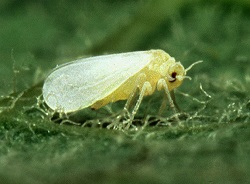 The pest, a Q-biotype of the sweet potato whitefly, Bemisia tabaci, has been present in greenhouses around the U.S. since 2004, when it was first found in Arizona. According to Florida Agriculture Commissioner Adam Putnam, this pest “poses a serious risk to Florida’s $120 billion agriculture industry and the more than two million jobs it supports.”
The pest, a Q-biotype of the sweet potato whitefly, Bemisia tabaci, has been present in greenhouses around the U.S. since 2004, when it was first found in Arizona. According to Florida Agriculture Commissioner Adam Putnam, this pest “poses a serious risk to Florida’s $120 billion agriculture industry and the more than two million jobs it supports.”








 The study,
The study, 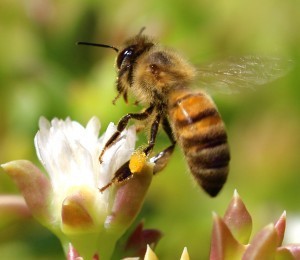 Neonics are associated with
Neonics are associated with  The report, Â
The report,   significant share of childhood pesticide poisonings occurred in very young children. “Children in the one-year age group were at greatest risk — as they’re at that stage where they spend a lot of the time on the floor and put things in their mouth,” said Karin English, PhD candidate at the University of Queensland. As a result of children’s propensity for hand to mouth motion, cockroach baits and ant liquid were found to be the most common source of insecticide exposure for kids under five, covering 39% of calls. However, Ms. English notes that enclosing cockroach baits in casings reduced poison exposure, and most liquid ant baits were placed in open containers on the floor, where children could access them. “While these products carry a relatively low risk of poisoning, parents need to ensure that all insecticides are out of reach and stored safely.” Bug sprays, including those containing
significant share of childhood pesticide poisonings occurred in very young children. “Children in the one-year age group were at greatest risk — as they’re at that stage where they spend a lot of the time on the floor and put things in their mouth,” said Karin English, PhD candidate at the University of Queensland. As a result of children’s propensity for hand to mouth motion, cockroach baits and ant liquid were found to be the most common source of insecticide exposure for kids under five, covering 39% of calls. However, Ms. English notes that enclosing cockroach baits in casings reduced poison exposure, and most liquid ant baits were placed in open containers on the floor, where children could access them. “While these products carry a relatively low risk of poisoning, parents need to ensure that all insecticides are out of reach and stored safely.” Bug sprays, including those containing 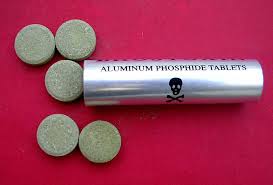
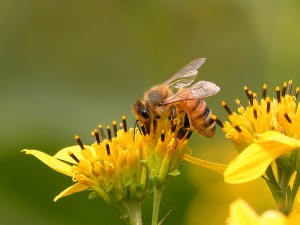
 “Fifty-one of the pesticides we tested in this study had never been analyzed in terms of their effects on respiratory outcomes. And some of them, like glyphosate, 2,4-D and permethrin, aren’t just used on farms. They’re used residentially now to kill weeds or treat fleas on pets,” said Dr. Hoppin. “We believe it’s important information that will help people make decisions about pesticides.”
“Fifty-one of the pesticides we tested in this study had never been analyzed in terms of their effects on respiratory outcomes. And some of them, like glyphosate, 2,4-D and permethrin, aren’t just used on farms. They’re used residentially now to kill weeds or treat fleas on pets,” said Dr. Hoppin. “We believe it’s important information that will help people make decisions about pesticides.” The Soil Association, a UK organization that campaigns for healthy, humane and sustainable food, farming and land use, is concerned that glyphosate is used on crops immediately before harvest, and subsequently makes its way into food. According to
The Soil Association, a UK organization that campaigns for healthy, humane and sustainable food, farming and land use, is concerned that glyphosate is used on crops immediately before harvest, and subsequently makes its way into food. According to 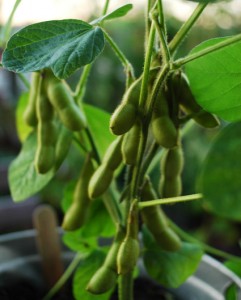 (Beyond Pesticides, August 9, 2016) Farmers in Missouri, Arkansas, and Tennessee are confronting widespread crop damage and bracing for lower yields as a result of agrichemical giant Monsanto’s botched roll-out of new genetically engineered soybean and cotton crops. The company, whose current line of glyphosate-tolerant crops are
(Beyond Pesticides, August 9, 2016) Farmers in Missouri, Arkansas, and Tennessee are confronting widespread crop damage and bracing for lower yields as a result of agrichemical giant Monsanto’s botched roll-out of new genetically engineered soybean and cotton crops. The company, whose current line of glyphosate-tolerant crops are 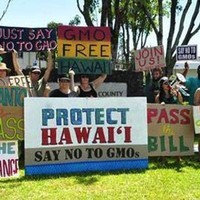 that EPA revoke HDOA’s primary enforcement authority indefinitely.  In the event that HDOA’s authority to regulate is stripped, EPA would then take over the responsibility for enforcing pesticide use violations occurring within the state.
that EPA revoke HDOA’s primary enforcement authority indefinitely.  In the event that HDOA’s authority to regulate is stripped, EPA would then take over the responsibility for enforcing pesticide use violations occurring within the state.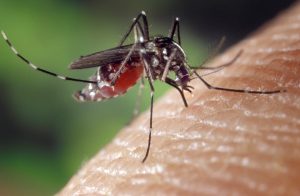 The Aedes aegypti mosquito, which has the ability to live indoors and reproduce even in tiny pools of water, is the primary way the Zika virus is spread, although there are reports that the disease can also be transmitted through sexual contact. Zika virus has been linked to cases of microcephaly, in which babies are born with underdeveloped brains. The virus has been detected in several Latin American countries, including Brazil where the outbreak was first observed and linked to increased cases of microcephaly. However, locally transmitted cases are now being reported in southern Florida.
The Aedes aegypti mosquito, which has the ability to live indoors and reproduce even in tiny pools of water, is the primary way the Zika virus is spread, although there are reports that the disease can also be transmitted through sexual contact. Zika virus has been linked to cases of microcephaly, in which babies are born with underdeveloped brains. The virus has been detected in several Latin American countries, including Brazil where the outbreak was first observed and linked to increased cases of microcephaly. However, locally transmitted cases are now being reported in southern Florida. Rye Golf Club, which turned into a “field of dustbowls” within weeks of the green residue appearing on golfer’s shoes, had to close 18 putting greens, leading members to demand thousands of dollars in refunds and city leaders to address the severely damaged city-owned golf course. The cause of the mysterious green residue was later revealed to be the result of an application of a contaminated batch of the fungicide ArmorTech ALT 70, whose active ingredient is
Rye Golf Club, which turned into a “field of dustbowls” within weeks of the green residue appearing on golfer’s shoes, had to close 18 putting greens, leading members to demand thousands of dollars in refunds and city leaders to address the severely damaged city-owned golf course. The cause of the mysterious green residue was later revealed to be the result of an application of a contaminated batch of the fungicide ArmorTech ALT 70, whose active ingredient is  The law, signed by the President on July 29, does very little to ensure that consumers will actually be able to identify  genetically engineered ingredients  because it  allows for a range of labeling options that will  not warn consumers — quick response (QR) codes, 800 numbers, websites and on-package labeling. This approach leaves poorer Americans at a disadvantage in accessing  this information, as QR code labels require the use of a smartphone to read. Allowing food companies to decide how to label enables  them to misinform or mislead the public about their products. We have already seen on product labels Â
The law, signed by the President on July 29, does very little to ensure that consumers will actually be able to identify  genetically engineered ingredients  because it  allows for a range of labeling options that will  not warn consumers — quick response (QR) codes, 800 numbers, websites and on-package labeling. This approach leaves poorer Americans at a disadvantage in accessing  this information, as QR code labels require the use of a smartphone to read. Allowing food companies to decide how to label enables  them to misinform or mislead the public about their products. We have already seen on product labels   f highly neurotoxic pesticides still widely used on farms in California, have been associated with a Â
f highly neurotoxic pesticides still widely used on farms in California, have been associated with a  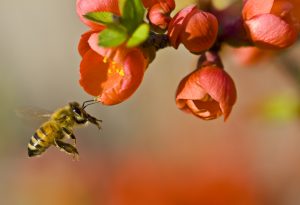
 d pets.
d pets. ized marijuana for medicinal and or recreational purposes. Because the U.S. government classifies cannabis as a narcotic, the U.S. Environmental Protection (EPA) does not register pesticide products for use in its production, leaving consumers exposed to hazardous pesticides through inhalation, ingestion, and dermal absorption without any evaluation of potential health effects.
ized marijuana for medicinal and or recreational purposes. Because the U.S. government classifies cannabis as a narcotic, the U.S. Environmental Protection (EPA) does not register pesticide products for use in its production, leaving consumers exposed to hazardous pesticides through inhalation, ingestion, and dermal absorption without any evaluation of potential health effects.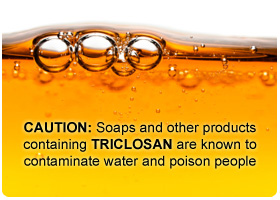 The transparency provision of the Sustainable Chemistry Policy requires all suppliers to provide full online ingredient disclosure beginning January 2015 and Walmart Priority Chemicals on packaging beginning January 2018. Walmart says that 78% of suppliers responding reported disclosure for all products. For their goal of advancing safer formulations of products, Walmart focused on reducing the HPCs.
The transparency provision of the Sustainable Chemistry Policy requires all suppliers to provide full online ingredient disclosure beginning January 2015 and Walmart Priority Chemicals on packaging beginning January 2018. Walmart says that 78% of suppliers responding reported disclosure for all products. For their goal of advancing safer formulations of products, Walmart focused on reducing the HPCs.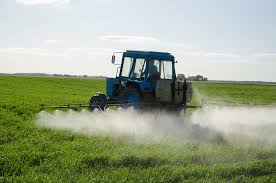 “It’s alarming to see just how common it’s been for the EPA to ignore how these chemical mixtures might endanger the health of our environment,” said Nathan Donley, Ph.D., a scientist with the CBD, and author of the report. “It’s pretty clear that chemical companies knew about these  potential dangers, but the EPA never bothered to demand this information from them or dig a little deeper to find it for themselves.”
“It’s alarming to see just how common it’s been for the EPA to ignore how these chemical mixtures might endanger the health of our environment,” said Nathan Donley, Ph.D., a scientist with the CBD, and author of the report. “It’s pretty clear that chemical companies knew about these  potential dangers, but the EPA never bothered to demand this information from them or dig a little deeper to find it for themselves.”
